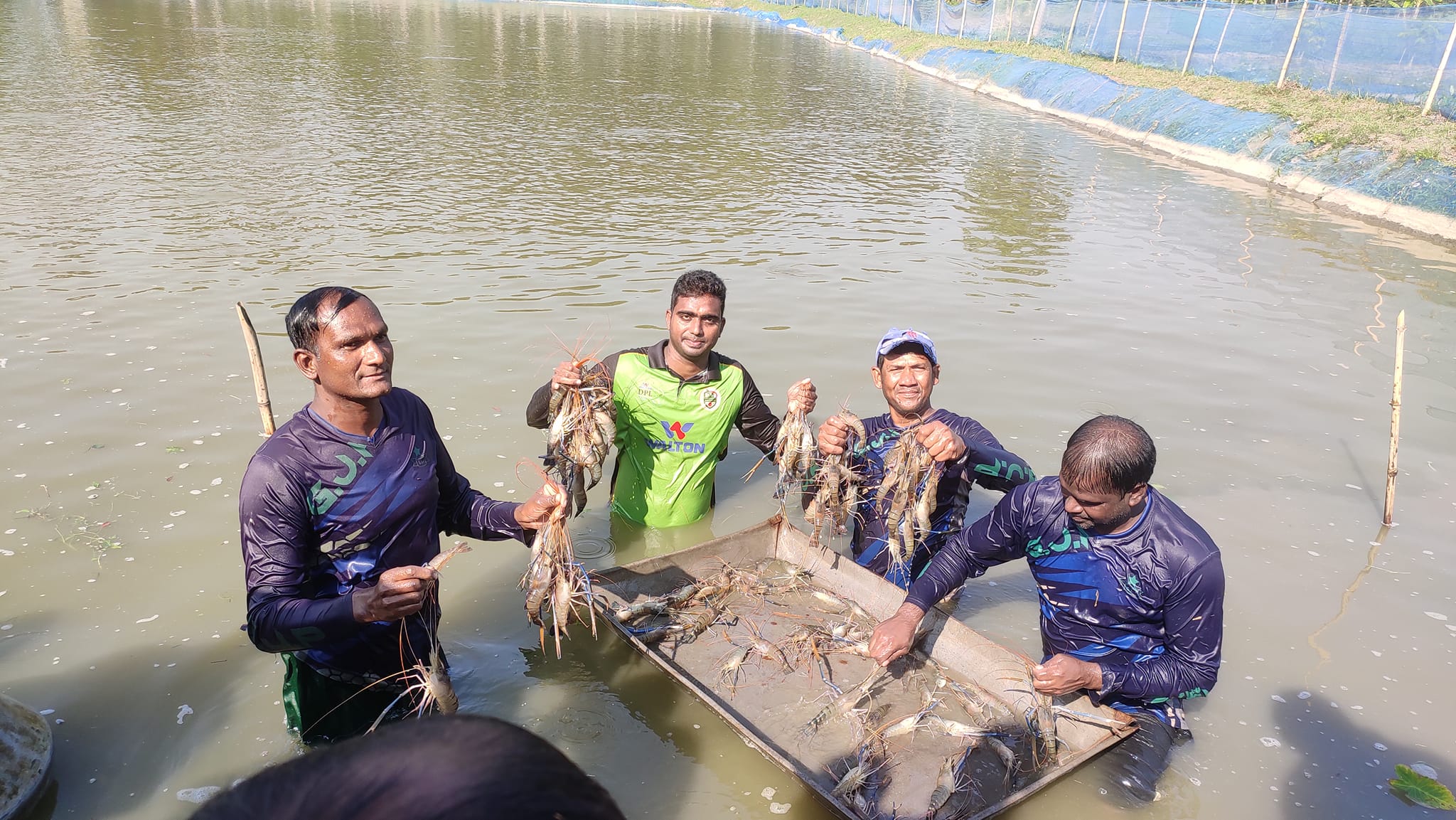মেনু নির্বাচন করুন
-
-
Home
- About Us
-
Our Services
Training and Opinion
Inspection
-
Higher Offices
Division / District
Ministry / Department
- e-Services
-
Gallery
Photo Gallery
Video Gallery
-
Contact
Official Contact
Contact map
Main Comtent Skiped
Achievements
The contribution of the fisheries sector to the economic development of agriculture-dependent Bangladesh is very important and undeniable. According to the Bangladesh Economic Survey 2021, the fisheries sector contributes 3.57 percent of the country's total GDP and more than one-fourth (26.50 percent) of the agricultural GDP. About 60 percent of the animal meat in our daily diet comes from fish. In the last three financial years (2018-19, 2019-20 and 2020-21), the total fish production was 43.84, 45.03 and 46.21 lakh metric tonnes. In the last three fiscal years (2018-19, 2019-20 and 2020-21) 73171.32, 70945.39 and 76591.69 MT of fish and fish products were exported worth 4250.31, 3985.15 and 4088.96 crore respectively. Foreign currency earned. Bangladesh ranks 3rd and 5th in the world in fish production in inland open ponds and fish production in closed ponds respectively (FAO, 2020). According to the information of the Department of Fisheries, Hilsa fish is one of the most important factors in increasing the production of fish. In the financial year 2016-17, 4 lakh 96 thousand metric tons of hilsa were produced. In the last year of 2020-21, the production has increased to 5 lakh 50 thousand metric tons. According to the directorate, 12 percent of the fish produced in the country in the last financial year was Hilsa. The overall fish production has increased through conservation, free breeding and breeding of endangered fish species. In the last five years, 534 fish sanctuaries have been established in various rivers and inland open water bodies of the country through various development projects. Fish production increased by up to 140 percent in the sanctuary-associated reservoirs. As a result of the establishment of the sanctuary, endangered and endangered and rare species of fish such as Ekthon, Teripunti, Meni, Rani, Goga Gutum, Chital, Foli, Bamos, Kaliboush, Id, Tengra, Sarpunti, Madhu Pabda, Ritha, Kajli, Chaka, Gajar, Baim etc. Significant reproducibility and availability increases. The abundance of these fish has also increased due to the release of fry of native kai, shing, magur, pabda, etc. in the sanctuary. The successful reflection of the overall picture of development in the fisheries sector of Bangladesh has also been seen in our Daghiloya fisheries sector. Daghiloya upazila is a surplus productive upazila in fish production. The annual fish production of the upazila has been 8,186.89 against the annual fish demand of 3652.63 MT (65 grams per person per day). tonnes (2021-22) which is almost double the annual demand. Fish produced in Dighlia is playing a leading role in meeting the needs of the people of different regions of the country including Jessore, Jhenaidah, Satkhira, Pirojpur, Jhalkathi, Faridpur. Directorate of Fisheries, Daghiloya is playing a leading role in the development of fishery resources of the upazila by providing better technology training to the farmers, setting up new technology demonstration, releasing fish hatchery in open ponds, setting up bi-nursery and successful implementation of fisheries laws.
Site was last updated:
2025-08-10 11:29:44
Planning and Implementation: Cabinet Division, A2I, BCC, DoICT and BASIS













